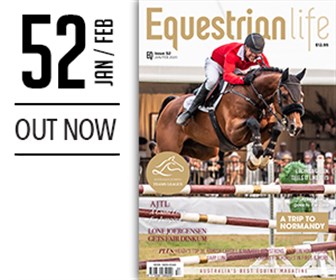|
By Kerry Mack
At Mayfield Farm we are often talking about balance. Dressage training aims to improve the balance of the horse. For the horse to be in self-carriage he must be balanced. As the training becomes more advanced we ask more challenging questions about the balance. The demanding transitions in the Grand Prix test, (such as passage to piaffe and back to passage), are all about the horse being able to collect over the hind legs, and keep his balance as he keeps the energy in the steps and brings the energy on the spot and forward again. The rider must also be in self carriage. She must be balanced on the horse in a way that she does not interfere with the horse's balance.

The Earth's gravity is a force that automatically effects us. We organise ourselves around gravity. I often think about the horse's centre of gravity and my own centre of gravity while I am riding. The centre of gravity is a concept of physics. It is an imaginary point in any physical body where the total mass can be concentrated. In our real world (as oppose to an ideal world) where gravity is uniform, it is also the centre of mass. It is a point, around which all the force of an object is BALANCED and directed down through the effect of gravity. If you suspend an object from a single point the centre of gravity will be below the point the object is suspended from. The centre of gravity of a regular object such as a sphere will be at the centre. Being an imaginary point the centre of gravity can exist outside the actual body. In a standing horse the centre of gravity is behind the heart and below the wither. If the horse raises his head the centre of gravity goes backwards. If the head is lowered the centre of gravity moves forwards, unless the rider has the ability to influence the horse to keep his balance with the centre of gravity back. This horse will engage the hind leg more underneath him, raise his back, and tilt his pelvis to counteract the effect of lowering the head. This is what we want to achieve.

In dressage we ask the horse to move his centre of gravity backwards towards his hind leg. This is what collection is. The rider should be balanced on the horse so she does not interfere with the balance of the horse. Her centre of gravity should be over his. You can feel this easily when you piggy-back a child. It is easy to manage the weight on your shoulders if the child balances, but can be difficult if a child squirms around. the rider must learn to give the aids without changing their centre of gravity. For example, to do the lateral work you should be able to use your outside leg without sitting to the outside.
In the next few blogs we will explore this further.
Have fun,
Kerry.
READ THE LATEST NEWS ARTICLES HERE

|

